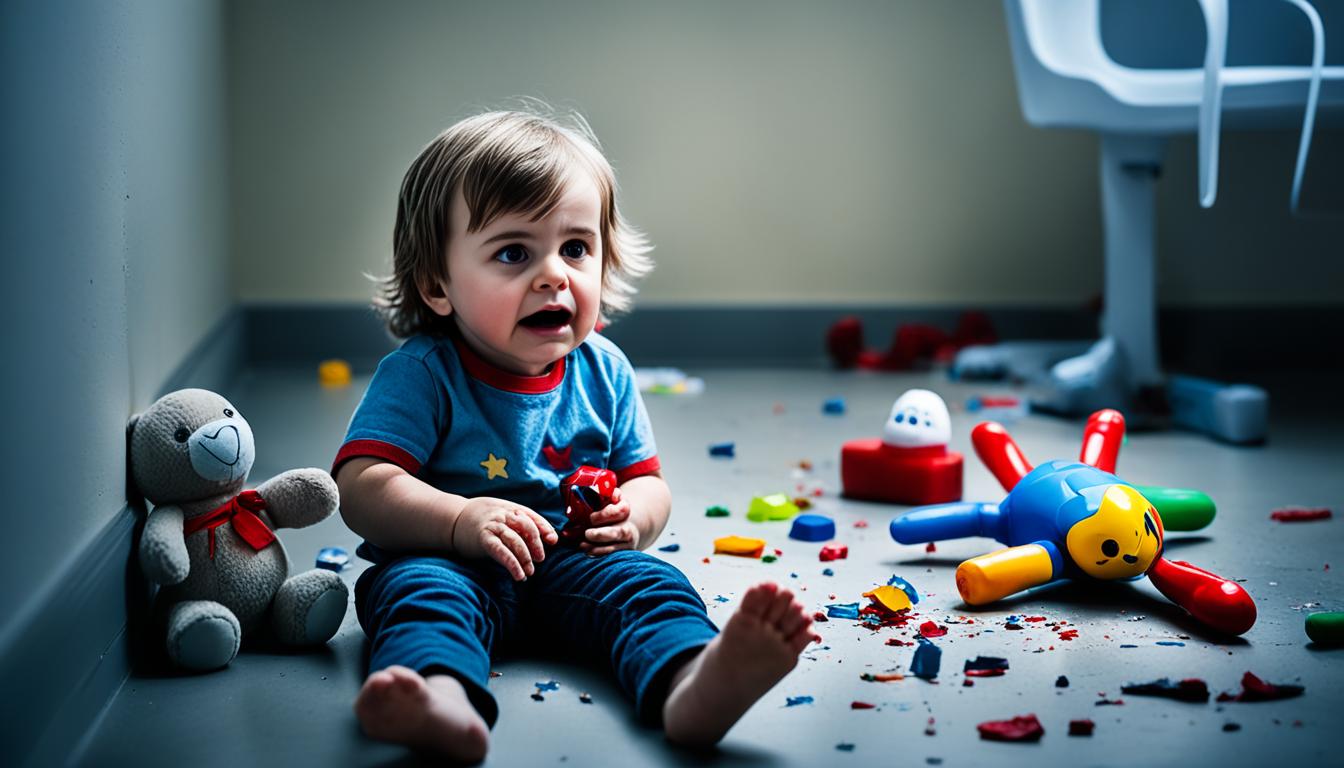Child abuse is a major issue that deeply impacts both kids and their families. It can lead to harm in many ways, including physically and emotionally. It’s crucial to spot the signs early to help kids and protect them. New treatments like stem cell therapy might offer hope for child abuse victims.
Key Takeaways:
- Child abuse can cause long-term difficulties in behavior and mental health development.
- Recognizing behavior clues is crucial in providing appropriate interventions.
- Stem cell therapy shows potential in the treatment of child abuse victims.
- Preventing child abuse requires a collective effort from child welfare organizations and the community.
- Early intervention and support services are vital in addressing child abuse cases.
Symptoms and Consequences of Child Abuse
Child abuse can come in many forms, like physical, emotional, neglect, and sexual abuse. Each kind can seriously affect a child’s behavior and brain development.
Physical abuse shows as bruises, welts, or broken bones on a child. They might also feel pain, have trouble moving, or have tense muscles. These signs can impact their movement and slow their growth.
Emotional abuse can deeply harm a child’s mind. Victims might act out, become very shy, or fear a lot. They could also speak late, find it hard to make friends, and have emotional ups and downs.
Neglect means not giving a child the care and attention they need. This lack can show as delays in growth, not eating well, staying dirty, and having sicknesses that go untreated. It can harm how well they think and how they relate to others.
Sexual abuse is very serious and can cause big changes in a child. They might suddenly seem very angry, be very sexual, lose skills they had, or be scared of specific people or places. This abuse can also cause physical issues like pain, infections, or diseases.
Child abuse doesn’t just hurt the kids now, it can change their brains for life. Studies show that abused children might develop their brain in a different way. This can lead to trouble learning, thinking, and dealing with emotions.
It’s very key to spot child abuse early to keep kids safe. Getting help and support can reduce the long-term harm and help children get better.
| Type of Abuse | Symptoms | Consequences |
|---|---|---|
| Physical Abuse | Bruises, broken bones, difficulty moving, abnormal muscle tone | Delayed motor skills, hindered developmental milestones |
| Emotional Abuse | Aggression, withdrawal, speech delays, social difficulties | Poor emotional regulation, impaired social development |
| Neglect | Physical and developmental delays, malnutrition, poor hygiene | Cognitive and social impairments, increased vulnerability |
| Sexual Abuse | Behavioral changes, physical symptoms, fearfulness | Prolonged psychological trauma, increased risk of mental health disorders |
Causes, Diagnosis, and Prevention of Child Abuse
The reasons for child abuse are often not fully known. Things like unusual brain development or injuries can lead to it. These injuries can harm the brain parts that control movement and posture.
Child abuse might also come from head injuries, infections, and jaundice at birth. Early spotting and tackling of abuse is vital. It helps professionals step in to shield the child and give support. Doing this early can limit the harm on a child’s brain and health.
Stopping child abuse involves many steps. Teaching people about abuse can make them better at spotting and stopping it. Giving families help, like classes and counseling, can solve problems that lead to abuse.
Getting communities to watch over kids and report any problems also makes a difference. By using all these methods together, we can lower child abuse rates. This way, we protect the safety and health of kids.

